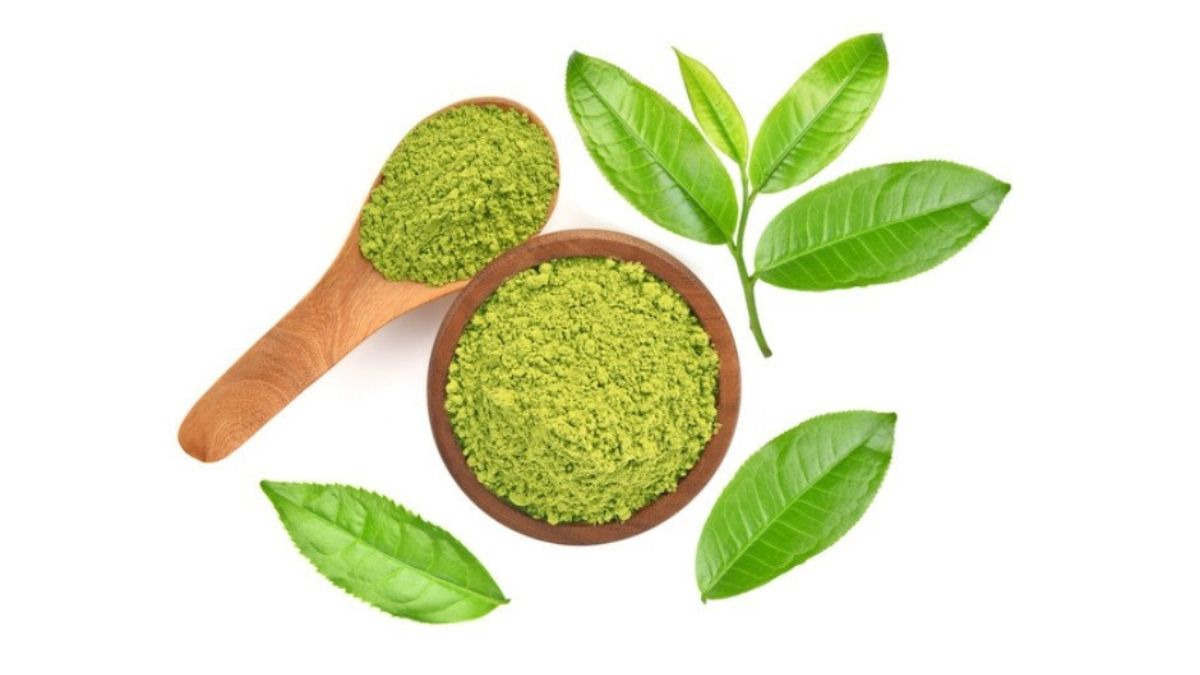Green Tea Extract A Game-Changer for Natural Dyes and the Textile Industry?
The many health advantages of green tea extract, which is made from Camellia sinensis plant leaves, have long been recognised. But new developments have shown that it has the potential to revolutionize the use of natural dyes, especially in the textile sector.
Introduction to Green Tea Extract
Green tea extract is full of polyphenols, especially catechins, which have strong antibacterial and antioxidant qualities.
History of Natural Dyes in Textile Industry
Natural dyes have been used for ages; ancient societies used the hues of plants, insects, and minerals to color textiles. However, because of its labor-intensive method and constrained color pallet, natural dyeing lost popularity when synthetic dyes became available in the 19th century.
Also Read: Standardized Botanical Extracts
Challenges with Traditional Dyeing Methods
Synthetic dyes are frequently used in traditional dyeing techniques, which can be harmful to both the environment and human health. In addition, resource depletion and water contamination are caused by the chemical processes used in synthetic coloring.
Role of Green Tea Extract in Natural Dyeing
Green tea extract provides a range of vivid colors without the negative side effects of synthetic dyes, making it a sustainable substitute. Many of the issues with conventional dyeing techniques are resolved by its natural composition, which makes it non-toxic and biodegradable.
Advantages of Using Green Tea Extract
- Environmentally Friendly: The production of textiles has a smaller environmental impact because green tea extract is biodegradable and contains no hazardous chemicals.
- Health benefits: Green tea extract’s antioxidant qualities help improve skin health and lower the chance of allergy reactions in those who are sensitive to them.
- Versatility: Green tea extract can produce a wide range of colours, from earthy browns to vibrant greens, providing designers with ample creative possibilities.
Environmental Benefits
The textile sector may limit water contamination and drastically lower its carbon footprint by substituting green tea extract for synthetic dyes. Furthermore, growing tea plants encourages sustainable agricultural methods and biodiversity.
Economic Impact on the Textile Industry
Green tea extract can be used as a natural dye to increase textile businesses’ competitiveness, draw in eco-aware customers, and create new market prospects. Furthermore, the sector is being encouraged to adopt green methods by the growing demand for textiles made in a sustainable manner.
Application Techniques for Green Tea Dyeing
Textiles can be treated with green tea extract by a variety of methods, including printing, direct application, and immersion dyeing. In terms of color intensity, pattern complexity, and production efficiency, each approach has special benefits.
Sustainability and Ethics
Green tea extract not only helps the environment but also supports moral industrial practices by putting worker safety and well-being first. Textile firms may guarantee the ethical standards and social responsibility of their supply chains by endorsing fair trade programs.
Health Benefits of Green Tea Extract
Green tea extract has many health advantages beyond its use in natural colouring, such as strengthened immunity, better cardiovascular health, and increased cognitive function. These characteristics highlight it even more as a comprehensive and sustainable solution for the textile sector.
Market Trends and Demand
Demand for eco-friendly products and sustainable textiles is rising as consumers become more conscious of environmental challenges. Producers who incorporate green tea extract into their manufacturing procedures can attract a sophisticated clientele and obtain a competitive advantage in the market.
Future Prospects and Innovations
Looking ahead, the textile industry may be able to take advantage of new opportunities presented by continued study and innovation in the field of natural dyes. Green tea extract’s potential to revolutionise sustainable textile production is expected to increase with the development of extraction strategies, colorfastness, and dye application procedures.
Case Studies and Success Stories
Citing its aesthetic and environmental benefits, green tea extract has already been adopted by a number of textile firms as a natural dyeing solution. Case studies demonstrate how green tea extract has been successfully incorporated into current production methods to produce consumer-friendly, premium fabrics that are also environmentally friendly.
Conclusion
In conclusion, green tea extract offers a diverse and sustainable substitute for synthetic dyes, thereby representing a paradigm change in the field of natural dyes. Green tea extract has the potential to transform the textile industry and open the door to a more sustainable and environmentally friendly future because of its numerous advantages for economics, environment, and human health.
FAQs
- Is green tea extract safe for use in textile dyeing?
- Yes, green tea extract is non-toxic and biodegradable, making it a safe and eco-friendly alternative to synthetic dyes.
- Does green tea extract produce vibrant colors?
- Absolutely! Green tea extract can yield a wide range of colors, from soft pastels to deep hues, depending on the concentration and application technique.
- Are textiles dyed with green tea extract colorfast?
- When applied correctly and treated with care, textiles dyed with green tea extract can exhibit excellent colorfastness, retaining their vibrancy wash after wash.
- How does green tea extract benefit the environment?
- Green tea extract is biodegradable and does not contain harmful chemicals, reducing pollution and minimizing the carbon footprint of textile production.
- Where can I find textiles dyed with green tea extract?
- Many eco-conscious brands and sustainable fashion labels offer textiles dyed with green tea extract. Look for certifications or inquire with manufacturers to ensure the products meet your sustainability criteria.







